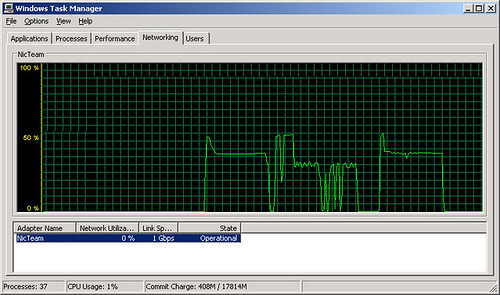Have you ever been to dinner with someone who's cell phone would simply not stop making noises the entire night? If you have, you might have been sitting across the table from me.
I get a lot of text messages. Last month, I received about 8,000 of them.
Thats 8,000 little 'beeps'. Not to mention the countless number of emails that I get both at the office and on my Gmail account creating another 1,000 little 'boops'. Thats a lot of noise to go walking around with.
Now by this point, you're probably thinking: "Okay, he can't possibly be that popular. After all, he's a software guy with a blog." Well, you're right. I am not that popular. The vast majority (about 98%) of those text messages are from automated monitoring applications trying to keep me abreast of what's going on at the office.
This situation has two inherent problems:
- I get so many alerts that I don't even try to keep up with them all
- I have no good way to distinguish between text messages from people and robots
The first problem is interesting to consider, and only slightly less easy to fix. Anyone who's ever worked in a real time environment knows the importance of automated monitoring software. Software which will pro actively let you know when trouble occurs. Without monitoring software we'd only know about problems when a user told us. Obviously no one wants to do business like that.
The problem with automated monitoring software is, that unless its properly tuned, you can end up in a situation where you have a really crummy signal to noise ratio. It's very important to spend time thinking about what things you want to be alerted about otherwise you just end up ignoring the system.
In our situation we never spent the time to correctly tune our alerting system. As a result I would constantly be getting text messages. Maybe I'd get one or two every five minutes. And by and large I didn't read them - even though some of them were probably important.
So why didn't I just turn off the system? Well, my brain started to become a pretty efficient filtering system. I got to the point where I would tune out the text messages unless they started coming in quickly. What's more, my brain seemed able to do this automatically as well. I could sleep through the individual text messages easily, but I would usually wake up when they started coming in more quickly.
The second problem, that of distinguishing alert messages from human-sent text messages, was one that begged for a software remedy. Not wanting to reinvent the wheel, I went in search of such a product.
Watchflag has changed my relationship with my cellphone. Watchflag is a rules based message alerting system for portable devices running Windows Mobile 5 or Windows Mobile 6. In my case I run Watchflag on a Samsung Blackjack2. My cell phone now vibrates and lights up when I get a human text message. Computer-based text messages just get the little ICQ "uh-oh" noise.
The other cool thing about Watchflag is that it is apparently written by actual human beings. When I recently had a problem with a new version, I emailed support and got in touch with one of the developers who fixed the problem and sent me a new version. Additionally, at the moment, Watchflag is being developed very actively. In the past week it feels like we've had 3 or 4 new versions. To some people that can seem like a drag, but since every upgrade brings new features, to me it's like a fun little present!
Lastly Watchflag is inexpensive. At the moment it is only $15 (half-off) and seems to feature free version upgrades. If you use a Windows Mobile based phone I highly recommend it.




